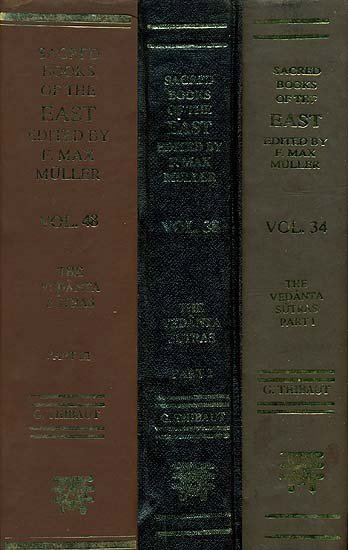Brahma Sutras (Ramanuja)
by George Thibaut | 1904 | 275,953 words | ISBN-10: 8120801350 | ISBN-13: 9788120801356
The English translation of the Brahma Sutras (also, Vedanta Sutras) with commentary by Ramanuja (known as the Sri Bhasya). The Brahmasutra expounds the essential philosophy of the Upanishads which, primarily revolving around the knowledge of Brahman and Atman, represents the foundation of Vedanta. Ramanjua’s interpretation of these sutras from a V...
Sutra 2.2.14
14. And on account of (the atoms) having colour and so on, the reverse (takes place); as it is observed.
From the view that the atoms of four kinds—viz. of earth or water or fire or air—possess colour, taste, smell, and touch, it would follow that the atoms are non-eternal, gross, and made up of parts—and this is the reverse of what the Vaiśeshikas actually teach as to their atoms, viz. that they are eternal, subtle, and not made up of parts. For things possessing colour, e.g. jars, are non-eternal, because it is observed that they are produced from other causes of the same, i.e. non-eternal nature, and so on. To a non-perceived thing which is assumed in accordance with what is actually perceived, we may not ascribe any attributes that would be convenient to us; and it is in accordance with actual experience that you Vaiśeshikas assume the atoms to possess colour and other qualities. Hence your theory is untenable.—Let it then, in order to avoid this difficulty, be assumed that the atoms do not possess colour and other sensible qualities. To this alternative the next Sūtra refers.
